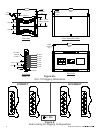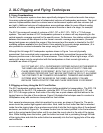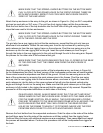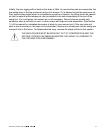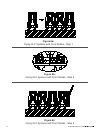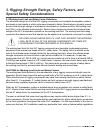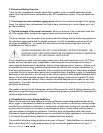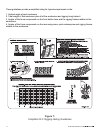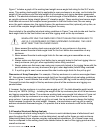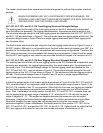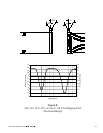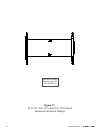
ELECTRO-VOICE
®
16
3.2 Structural Rating Overview
There are two independent strength ratings that, together, give a complete description of the
overall structural performance capabilities of any XLC loudspeaker system. They are defined as
follows:
1. The strength of each individual rigging point; which is the combined strength of the rigging
frame, the rigging frame components (front button bars, rear swing arm, quick-release pins, etc.)
and the enclosure.
2. The total strength of the overall enclosure; which is a function of the combined forces from
all of the rigging points acting on the rigging frames and enclosure as a whole.
The array designer must be aware of the working-load-limit ratings and the loads being applied to
the individual rigging points and the overall enclosure. An XLC loudspeaker system is only as
strong as its weakest link. It is usually the case that one of the working-load limits will be ap-
proached sooner that the other.
WHEN SUSPENDING ANY XLC LOUDSPEAKER SYSTEM OVERHEAD, THE
WORKING-LOAD LIMITS MUST NEVER BE EXCEEDED FOR EACH INDIVIDUAL
RIGGING POINT, OR THE OVERALL ENCLOSURE.
The forces acting on each individual rigging point and on the overall enclosures in an XLC flying
system will vary with each array configuration. Determining the forces throughout an array re-
quires complex mathematical calculations. Electro-Voice engineers have, however, defined a set
of simplified structural-rating guidelines that eliminate the need for the complex calculations for
most array configurations. The interaction of the complex forces throughout arrays were analyzed
to develop this set of conservative guide-lines, presented below, to enable a rigger to immediately
determine on site whether or not an array is safe without having to make weight-distribution calcu-
lations. The structural-strength ratings of the individual rigging points and the overall XLC enclo-
sures are also presented below so that a complex structural analysis can be made for any array
configuration. The reader should consult an experienced structural engineer to perform the com-
plex structural analysis.
The reader is directed to the References section of this manual for a list of rigging references (for
background in general rigging practice) and mechanical engineering references (for background in
structural engineering analysis).
3.3 Simplified Structural-Rating Guidelines
Electro-Voice engineers have defined a set of simplified structural-rating guidelines that will en-
able a rigger to immediately evaluate the safety of an XLC system on site without having to make
complex force-distribution calculations. A combination of destructive testing and computer model-
ing were used to analyze the complex forces throughout arrays. Conservative working-load rat-
ings were utilized to simplify the guidelines. Therefore, array configurations other than those
illustrated in these simplified guidelines may be permissible for those applications, consult section
3.4 Complex Structural-Rating Analysis for a detailed structural analysis.
The simplified structural-rating guidelines are shown in Figure 7. (Note that there is a label on the
back of each flying XLC loudspeaker enclosure that includes the graphics shown in Figure 7.)




